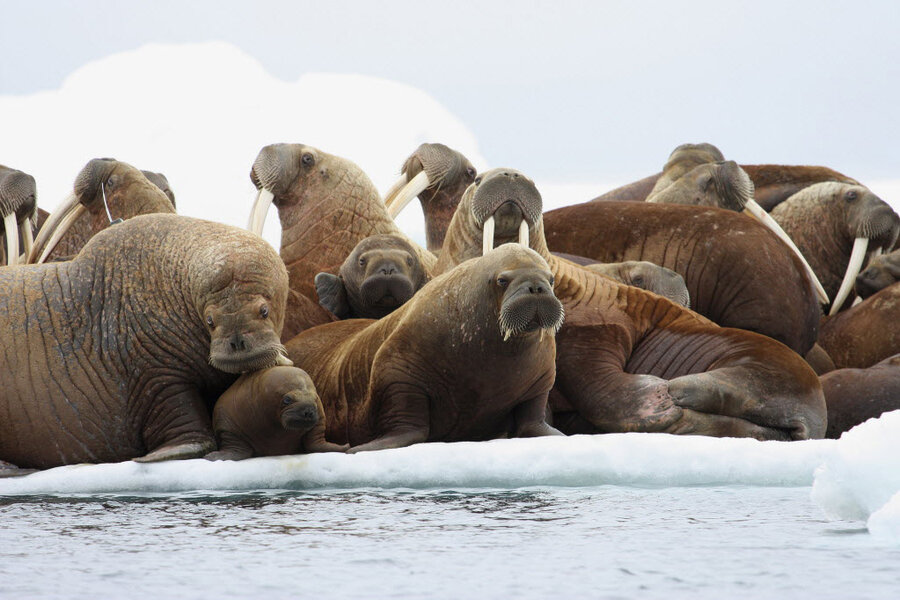Why deaths of 25 walruses prompted a federal probe
Loading...
Federal authorities are investigating the death of 25 Pacific walruses found along the Alaskan shoreline last week, casting the controversial practice of “head-hunting” back into the spotlight.
“Head-hunting,” which refers to the hunting of walruses purely for their tusks, is prohibited in Alaska except only to the state’s indigenous population, as The Christian Science Monitor previously reported.
The two dozen animals discovered last week, twelve of them only pups, had been shot, according to some reports. And several had had their heads and tusks removed, suggesting that it could have been a case of poaching.
But US Fish and Wildlife Service officials investigating the carcasses refused to publicly speculate, emphasizing the range of potential causes behind the walruses’ deaths.
“We can’t come to any conclusions based on a report,” spokeswoman Andrea Medeiros said, according to The Washington Post. “You have to go out and investigate.”
One possibility, for instance, is that the walruses died at sea and were washed ashore, said Ms. Medeiros. Last year, as many as 35,000 walruses sought refuge onshore as the sea ice they usually rest on became another casualty of a warming climate.
If the claims of poaching are true, they are particularly troubling given the extensive threat the animals already face from climate change. Because of their low reproductive rate, walrus populations are already easily influenced by hunting and other factors, according to the Seal Conservation Society.
In Alaska particularly, native hunters who kill walruses must only do so for subsistence purposes or to make handicrafts, said the organization on its website. Environmental regulations mandate that the hunters “fully utilize the walruses that they kill.”
But Alaska is also historically known as the base for a network of hunters and buyers, where a pair of walrus tusks on the black market can go for at least $300. This offers some “a strong financial incentive to head-hunt," said the Seal Conservation Society.








